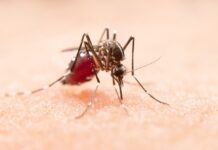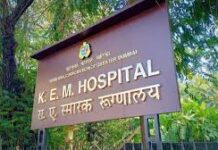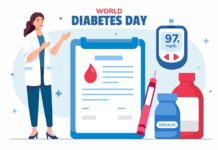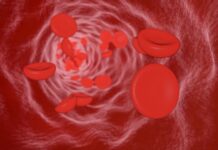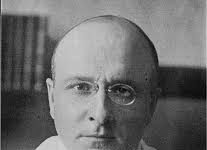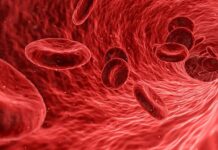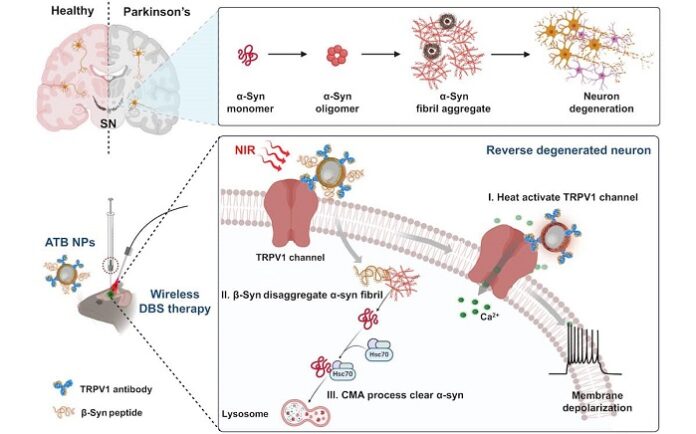

A team of researchers in Beijing has developed a nanoparticle-based deep brain stimulation (DBS) system that successfully reversed Parkinson’s symptoms in mice. This wireless, injectable system not only restored motor function but also revived degenerated dopamine neurons and significantly boosted dopamine levels by clearing toxic protein buildups.
The Challenge of Parkinson’s Disease
Parkinson’s disease is a chronic neurodegenerative disorder marked by the gradual loss of dopamine-producing neurons. This leads to severe motor dysfunctions, including tremors and rigidity. Traditional DBS treatments aim to increase dopamine signalling, often requiring permanent electrode implants in the brain. Other experimental methods, like optogenetics, involve gene editing. However, these approaches do not reverse neuron degeneration, leaving disease progression unchecked.
A New Target: TRPV1 and the Substantia Nigra
Led by Dr. Chunying Chen at the National Center for Nanoscience and Technology, the team focused on a heat-sensitive receptor called TRPV1, which is highly expressed in dopamine neurons within the substantia nigra, the brain region responsible for motor control. The team hypothesized that activating TRPV1 could stimulate dopamine neurons and reverse neurodegeneration.
Tackling the Root Cause: Clearing α-Synuclein Fibrils
Research shows that α-synuclein fibrils—toxic protein clumps—accumulate in the substantia nigra and drive neuron death. Removing these fibrils requires restarting autophagy, the cell’s self-cleaning mechanism. Thus, the team designed a treatment that could disaggregate fibrils while restoring autophagic function.
Introducing the ATB Nanoparticle System
As reported by physicsworld, the researchers developed a three-part nanosystem, named ATB (Au@TRPV1@β-syn):
- Gold nanoparticles that absorb near-infrared (NIR) light and produce heat,
- TRPV1 antibodies that bind the particles to dopamine neurons,
- β-synuclein peptides that disassemble α-syn fibrils and trigger autophagy.
Upon pulsed NIR laser irradiation, the nanoparticles heat up, activating TRPV1, restoring neuronal activity, and releasing β-syn to clear toxic protein buildups.
In Vitro Success: Reviving Neurons in the Lab
In initial lab tests using cellular models of Parkinson’s, the ATB system activated dopamine neurons under NIR light and stopped neuron death induced by α-syn fibrils. The treatment reduced cell death from 68% to 0%, demonstrating its protective effect on dopamine cells.
In Vivo Results: Motor Recovery in Mice
The team then injected the nanoparticles directly into the substantia nigra of mice with Parkinson-like symptoms, ensuring precise delivery and bypassing the blood–brain barrier. Mice received weekly NIR irradiation for five weeks.
They underwent three types of motor function tests:
- Rotarod test (measuring balance and coordination),
- Pole test (measuring agility),
- Open field test (assessing exploration and movement).
Treated mice showed significant motor improvement, performing nearly as well as healthy control mice.
Reversing Neuron Loss and Ensuring Safety
Immunohistochemistry confirmed that the degeneration of dopamine neurons seen in untreated mice was reversed in those treated with the ATB system. Safety tests revealed no biochemical toxicity or thermal damage. Moreover, ATB nanoparticles remained stable in the brain and showed minimal migration to other body parts or fluids.
Future Directions: Gold Clusters for Neuroprotection
Encouraged by the results, Dr. Chen’s team is now exploring therapeutic gold cluster nanocomposites designed to target α-syn aggregation, reduce oxidative stress, and regenerate dopamine neurons. Their goal is to develop a comprehensive, non-invasive, and restorative treatment for Parkinson’s disease.





